Checking tire pressure is one of the most critical bike maintenance steps you need to take for your kids' bikes, and it does not require any training, expertise, or experience.
For casual cyclists, it is a matter of pumping the bike tire to shape, while for others, it is about how hard it gets, sometimes rock solid. Some can even forget that keeping a bike tire inflated even when in storage for an extended period maintains the bike and ensures a longer service and value for their money. For cycling freaks and enthusiasts, the numbers matter more!
There is never a rule on how often to check the tire pressure, but you should do it quite often, especially before, during, and after rides.
The lower the tire pressure, the slower the bike but, the more comfortable the ride. On the other hand, the harder the tire or the higher the tire pressure, the faster the bike but, the bumpier the ride.
Are you wondering what PSI or bar you should run for kids' bike tires or what you should consider as you inflate the tires? We've got you covered!
In this comprehensive guide, we advise you on the recommended pressure to inflate and maintain your kids' bike tires, depending on influencing factors. We also give you essential tips that will come in handy. Let's get to it!
What PSI should you run for kids' bike tires?
Compared to adult bikes, kids' bikes are slightly lighter. Kids, too, are lighter than adults, meaning that the PSI for adult bikes rarely applies to kids.
PSI stands for pound per square inch, a unit measuring pressure. The higher the PSI, which means higher tire pressure, the harder the tire, and the lower the PSI, the softer the bike tire.
In most cases, bike tires have the recommended pressure rating engraved, written, or embossed into the tire's sidewalls. You can simply look at the side close to where the tire touches the rim for the range of the tire; whether it be for kids or adult bike tires, it's the standard. The information is usually presented in either PSI or BAR units.
Typically, this is provided as a range rather than an exact figure because there is a hoard of factors that affect how hard or soft you go with the tire pressure.
However, if, for one reason or other, you notice that your tire does not indicate the recommended pressure, you should feel the tire and determine the smoothness or firmness, depending on the surface your kid wants to ride.
Generally, the optimum kids' bike tire pressure ranges from 7.6 PSI for bikes ridden by 2-4-year-olds and about 11.5 PSI for kids aged 10 years. If the kids ride bikes on wet and uneven surfaces, you should consider reducing the pressure by 2 PSI. For adolescents aged 12-16 years old, who are riding adult bikes, you can use the same tire pressure recommended for adult bike tires, depending on the bike.
Comparison of the front and rear tire PSI estimates based on riding conditions
We have mentioned that the type of riding surface, and thus the goal for riding, impacts the amount of pressure you need for a bike tire. If your kids are riding in wet conditions, the pressure should be different from when they are riding in dry conditions. The same applies to whether they are riding on roads/pavements of trails and rough terrains. We have categorized the estimated PSI ranges depending on the surfaces and riding conditions below:
Road and Paves Surfaces
|
Wheel Size in inches |
Recommended PSI for the front tire (wet conditions) |
Recommended PSI for the front tire (dry conditions) |
|---|---|---|
|
14 inches (for 2-4-year-olds) |
Front tire: 10.6 - 13.4 Rear tire: 12.0 - 14.3 |
Front tire: up to 11.4 Rear tire: up to 12.3 |
|
16-inches (4-6 years) |
Front tire: 13.0 -13.4 Rear tire: 14.0 -14.4 |
Front tire: 11.0-11.4 Rear tire: 12.0-12.3 |
|
20 inches (5-8 years old) |
Front tire: 15.4 Rear tire: 16.5 |
Front tire: 13.4 Rear tire: 14.5 |
|
24-inch (8-11 years old) |
Front tire: 11.5 - 15.4 Rear tire: 12.3 – 16.5 |
Front tire: 9.5-13.4 Rear tire: 10.3-14.5 |
|
26 –inch (8-11 years old) |
Front tire: 11.5 Rear tire:12.3 |
Front tire: 9.5 Rear tire:10.3 |
Mountain Biking
|
Wheel Size in inches |
Recommended PSI for the front tire (wet conditions) |
Recommended PSI for the front tire (dry conditions) |
|---|---|---|
|
14 inches (for 2-4-year-olds) |
Front tire: 7.6 – 13.0 Rear tire: 9.0 – 14.7 |
Front tire: 9.6 – 11.0 Rear tire: 11.0 – 12.7 |
|
16-inches (4-6 years) |
Front tire: 13.0 Rear tire: 14.7 |
Front tire: 11.0 Rear tire: 12.7 |
|
20 inches (5-8 years old) |
Front tire: 15.0 Rear tire:16.9 |
Front tire: 13.0 Rear tire:14.9 |
|
24-inch (8-11 years old) |
Front tire: 11.2-15.0 Rear tire:12.6-16.9 |
Front tire: 9.2-13.0 Rear tire:10.6-14.9 |
|
26 –inch (8-11 years old) |
Front tire: 11.2 Rear tire:12.6 |
Front tire: 9.2 Rear tire:10.6 |
Factors that affect the PSI for a Bike
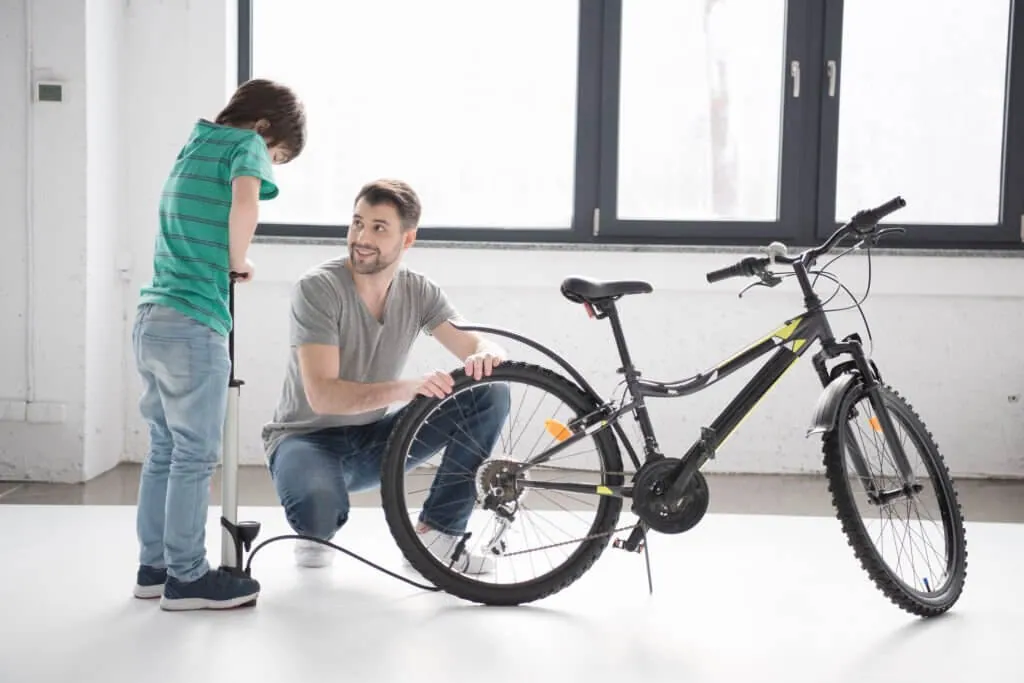
When deciding on the right PSI to inflate a bike, you should consider a few factors that affect the extent to which you can inflate the bike.
Type of Surface
The terrain or surface where the kids ride the bike matters more when it comes to inflating the bike tires. If the kid is riding on pavements and the road, the tire pressure must be higher, which means the tire needs to be hard. However, if the kid is riding the trails or dirt tracks (mountain biking or downhill endure riding), the PSI should be lower to have higher traction, low rolling resistance, and better comfort.
Width of the tire
You don't want a scenario where the tire bottoms out on the rim, which means you have to inflate the tire to the correct PSI, depending on the tire's width.
The larger the tire width, the more air volume it needs to inflate, which means lower PSI or tire pressure. On the other hand, smaller tires, such as hybrid and road bikes, will need higher PSI to prevent pinch flats.
Weight
The more the weight of the rider, the more the pressure. Whether your kid is riding the pavements, commuting to school, or shredding the trails, if they are heavy, they might need a higher PSI compared to their lighter peers to get the same performance levels in their tires.
Although there is no rule on how much PSI to inflate the tire, ensure that you play around with the tire pressure and see how the tires behave when the rider hops on their bike. In most cases, the rear tires carry more weight than the front tires, and you need to make the necessary adjustments.
Why you should not under or Over-inflate a bike tire
Do not overinflate or underinflate a tire. If you overinflate a tire, you might create weak points on the tubeless tire and increase its chances of quick wear and tear.
Similarly, you risk blowing the tube either when inflating or riding, which can cause some injuries and harm.
If you underinflate a tire, the tires could have pinch flats or snake bites when they encounter hard objects on the riding surfaces.
Such mistakes will cost you a tire; sooner or later, you will be in the market for kids' replacement bike tires.
How to measure tire pressure for kids' bikes
There are two ways to measure the best tire pressure on kids' and adult bikes, and you can either feel the pressure or use a pressure gauge.
While the former is effective and quick, it is inaccurate and unreliable. On the other hand, using a pressure gauge, you get an accurate measure of the PSI or BAR.
Some hand and floor bike pumps have a built-in PSI gauge, usually mechanical or digital. You can also buy a pressure gauge as a stand-alone device if you need to inflate the tire to the recommended PSI.
To estimate if the tire pressure is okay, you or the little rider should feel the tire by pressing it to the ground. If it is hard (as hard as an apple), it should be great for pavements, concrete, or hard-riding surfaces. It is suitable for dirt surfaces if the tire is squishy, knobby, or not as hard (as an orange). Finally, if they find out that the tire is super soft (like a ripe banana), it is unsuitable for riding and should be inflated to the correct PSI or bar.
Tire Pressure, Traction, and Rolling Speed
A firm or rock-solid tire will roll faster, but the ride will be unforgiving, uncomfortable, harsher, and bumpier. On the other hand, when you have a lower tire pressure and a smoother tire, the rolling slow down, and the ride becomes bearable, forgiving, and comfortable. Finding the balance between rolling speed and traction matters more regarding performance. When a tire is softer, it has more traction and comfort, and to get the right balance for this, you should explore the recommended ranges of PSI or Bar depending on the weight of the kid and the terrain they are riding.
If your kiddo rides the bike around the neighborhood, don't run too low PSI on the bike tire, as you risk flat tires, damaged rims, and a sluggish bike. On the worst, the bike will most likely get a pinched tube as the kid rides.
If you are preparing for mountain biking or trail riding, consider reducing the pressure or inflating to lower PSI, say 6-7 PSI, to increase comfort and traction and enable the kid to enjoy the ride. Even the tubeless tires require lower PSI if ridden in rougher or uneven terrain.
If you go too low, you risk creating too much traction or rolling resistance, which can bottom out the tire on the rim, causing accidents on the trails. The best thing to do is to find a balance so that the rider's weight matches the pressure on the bike tire for optimum performance when you have a balanced rolling resistance, comfort, and traction.
Conclusion
The correct tire pressure makes a world of difference when it comes to riding experience and bike performance. In most cases, the maximum you can go with a kid's bike tire is 40 PSI; above that, you have overinflated it, which comes with the consequences discussed above.
It is never a bad idea to frequently check and either inflate or deflate kids' bike tires. In fact, it is a simple bike maintenance hack that you can use to ensure a longer life cycle and service for the tires on your kids' bikes. When left in storage for a while, the bike tires slowly lose air, affecting the tire pressure. Depending on the riding surface, you need to adjust the tire pressure. Most importantly, rear tires always tend to have a higher pressure because they carry the cyclist's weight. The good thing is getting the best tire pressure to avoid eventualities.
Remember, if it is as flabby as a banana, it needs fixing; if it is as hard as an apple, then its best for pavements and roads; and if it is knobby or squishy as an orange, it is great for the trails and off-road riding. Also, when a bike has less air and little pressure, the bike is generally more comfortable. However, if the goal is to achieve faster rolling speed, more air and pressure must be needed.

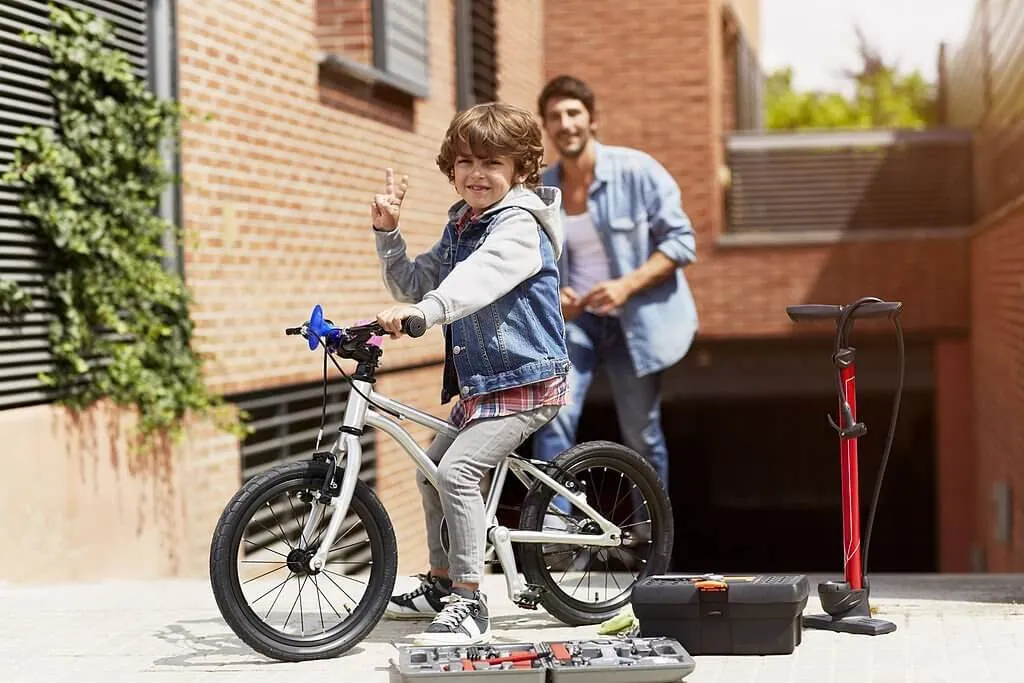

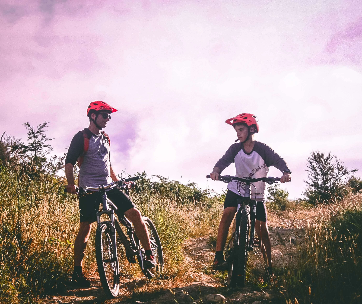
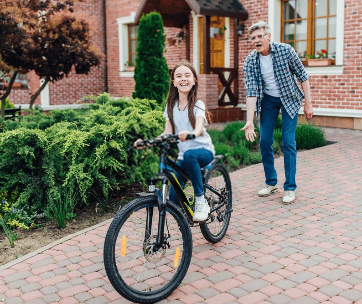
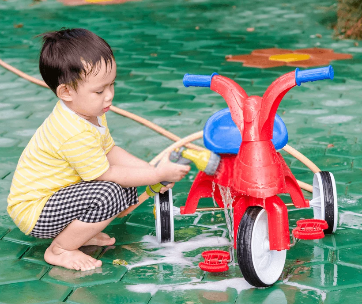
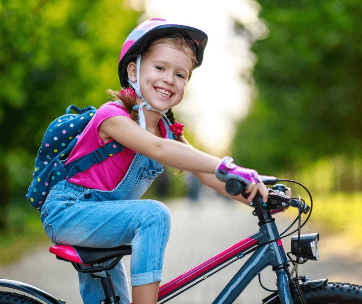
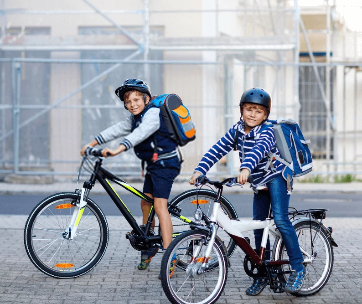
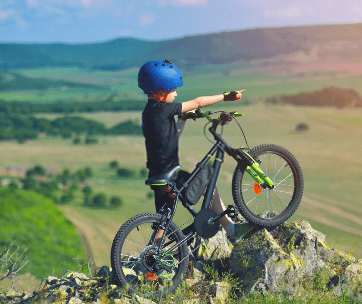
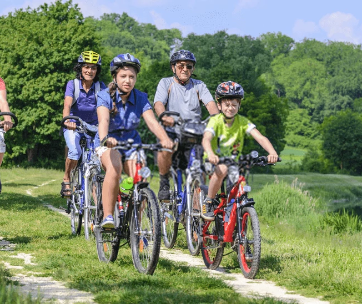
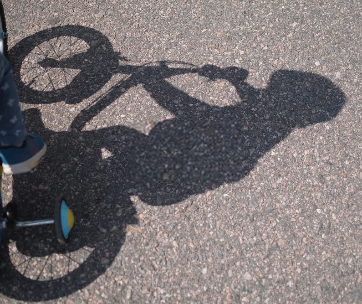
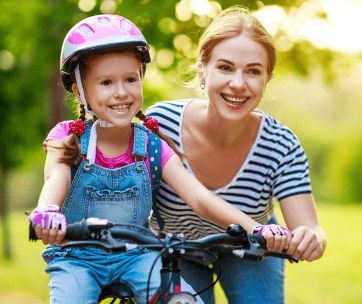
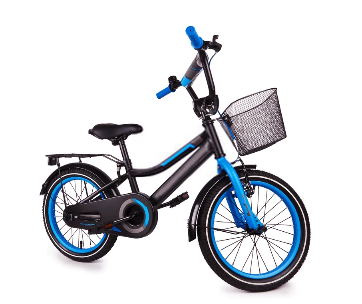
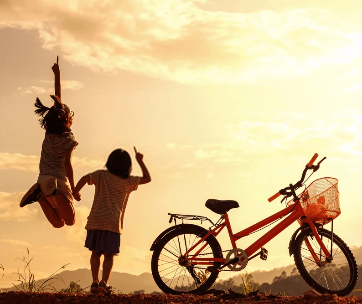
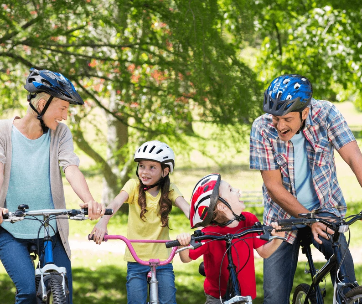
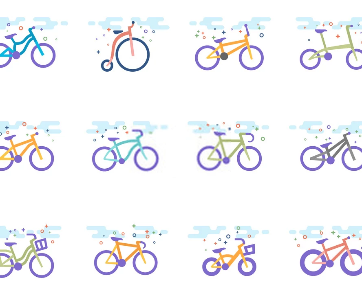
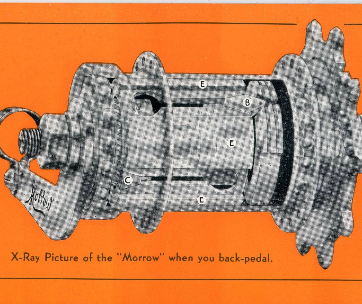
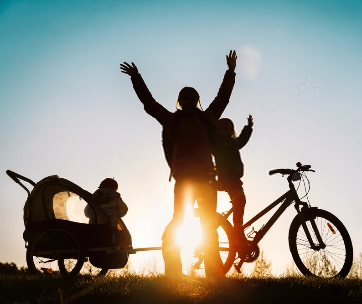
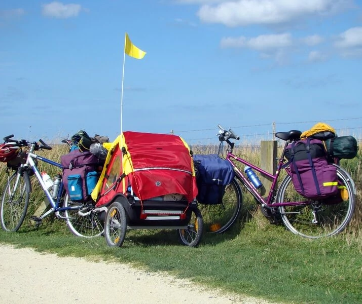
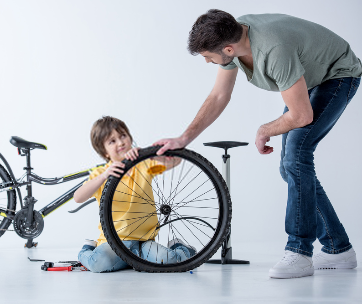
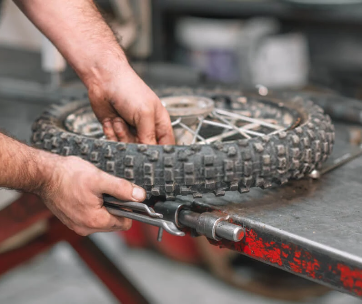
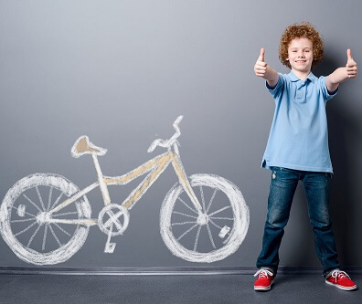
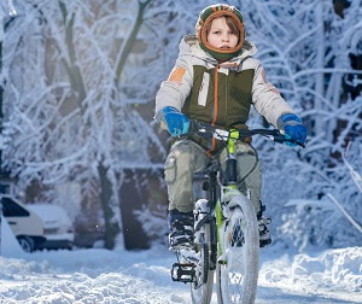
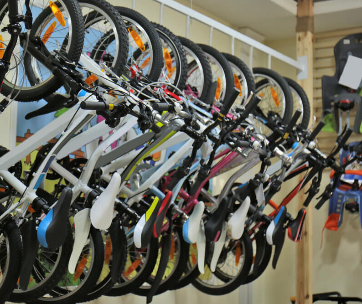
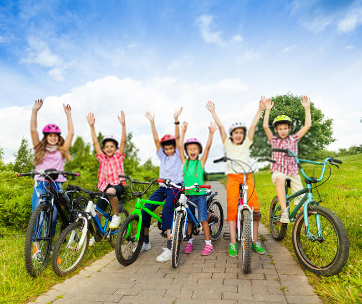
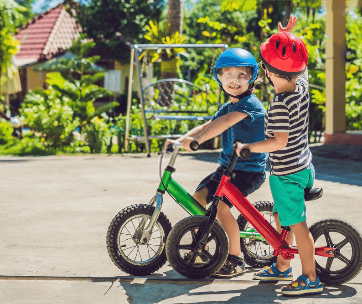
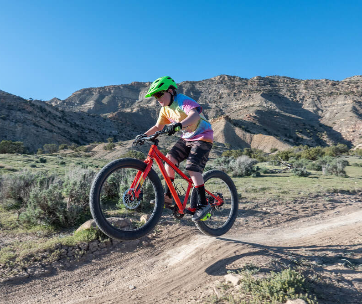
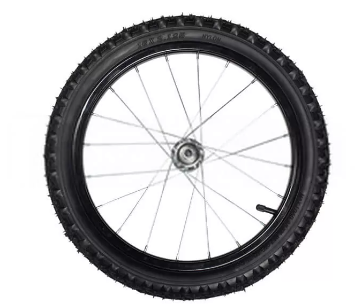
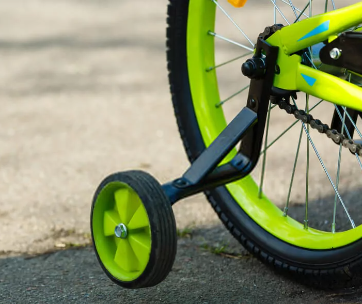
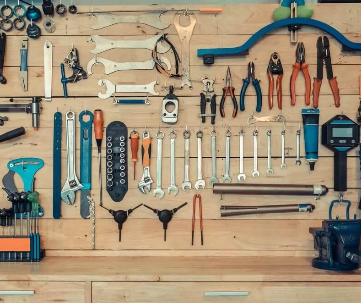
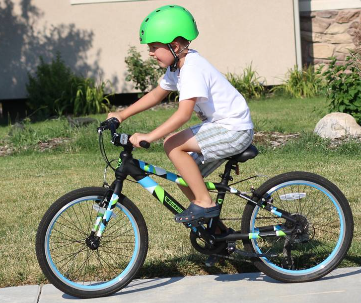
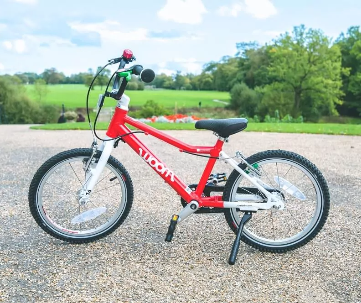
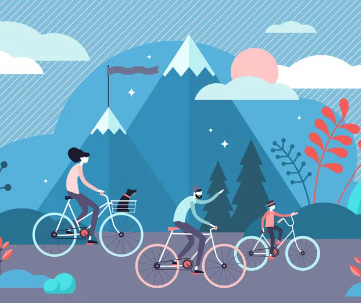
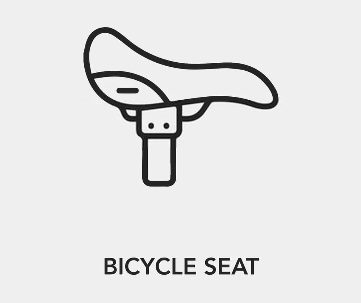
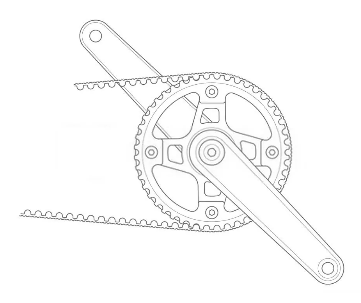
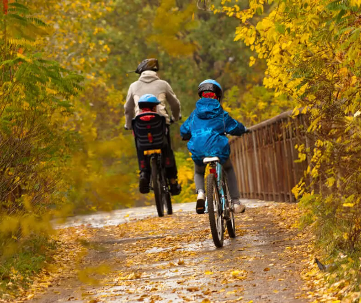
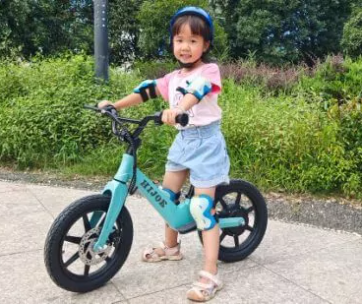
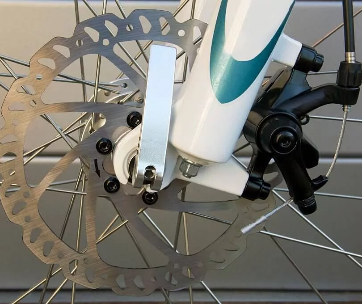
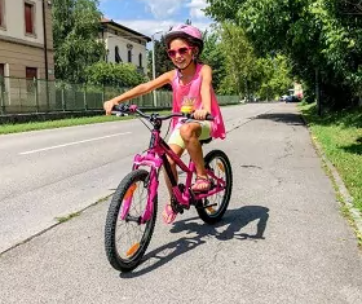
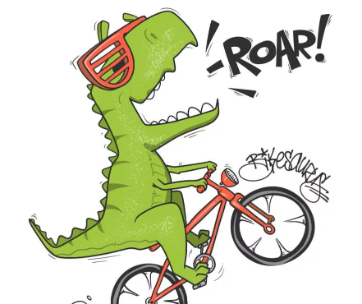
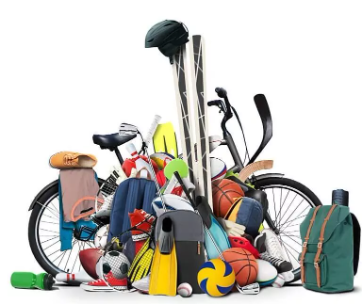
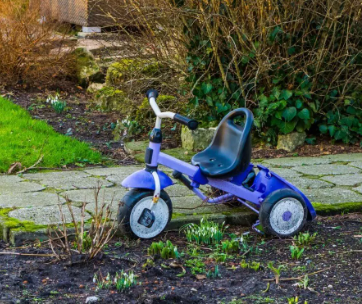
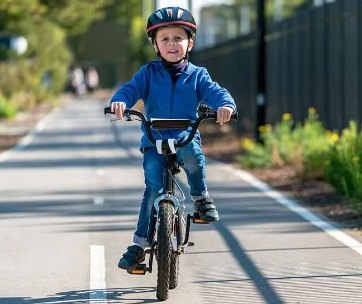
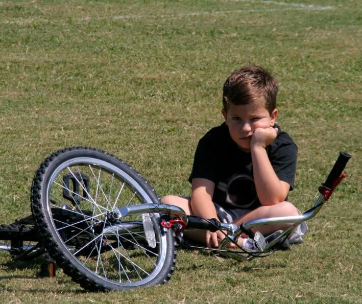
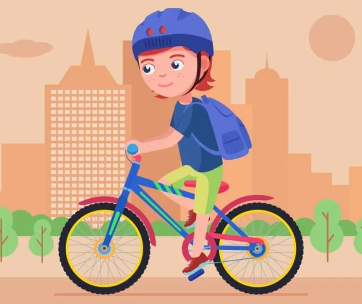
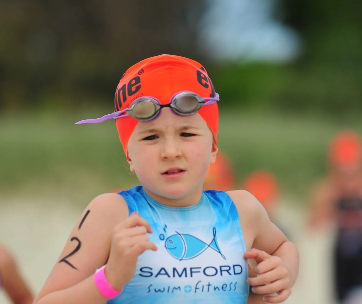
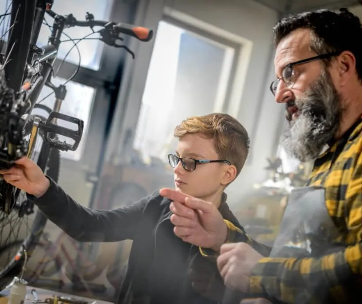

Comments